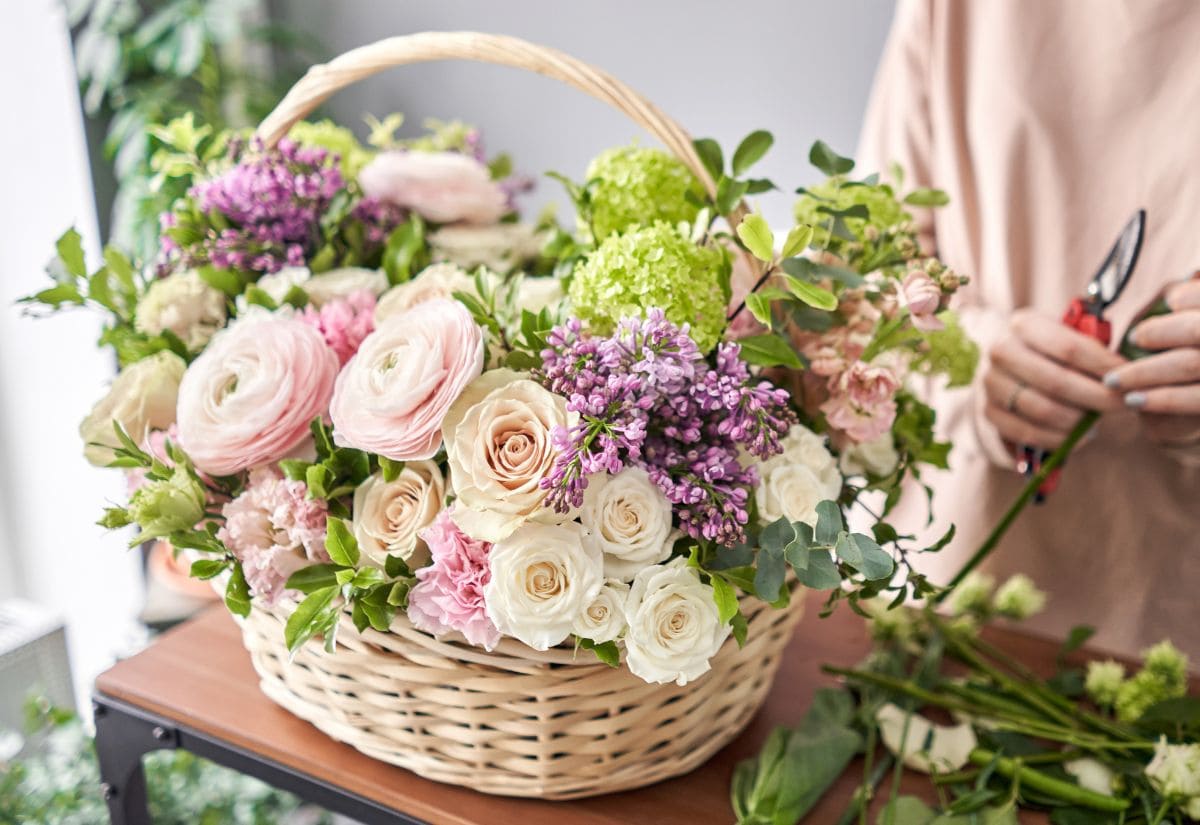
Roses, renowned as the queens of flowers, stand as the most iconic and adored blossoms worldwide. However, their prestige comes with particular preferences; not every garden can accommodate their whims.
For optimal blooming, roses demand at least six hours of sunlight every day. They also thrive in well-drained acidic soil and should avoid the shade of larger trees. But for those who adore the classic rose shape yet find themselves in environments unsuited to roses, all hope is not lost.
While roses might have a signature look, they don’t hold a monopoly on that elegance. A variety of flowers flowers that mimic the elegance of roses in their own way, but they are not roses.
Blooms like peonies, camellias, dahlias, begonias, and ranunculus offer rose-like appearances and can flourish in places where roses might falter.
You’re in the right place if you seek flowers reminiscent of roses. We’ve handpicked 10 roses lookalikes blooms that beautifully mirror the iconic shape and appearance of double roses..
Dive in to discover these rose doppelgangers and get tips on growing them in your garden!
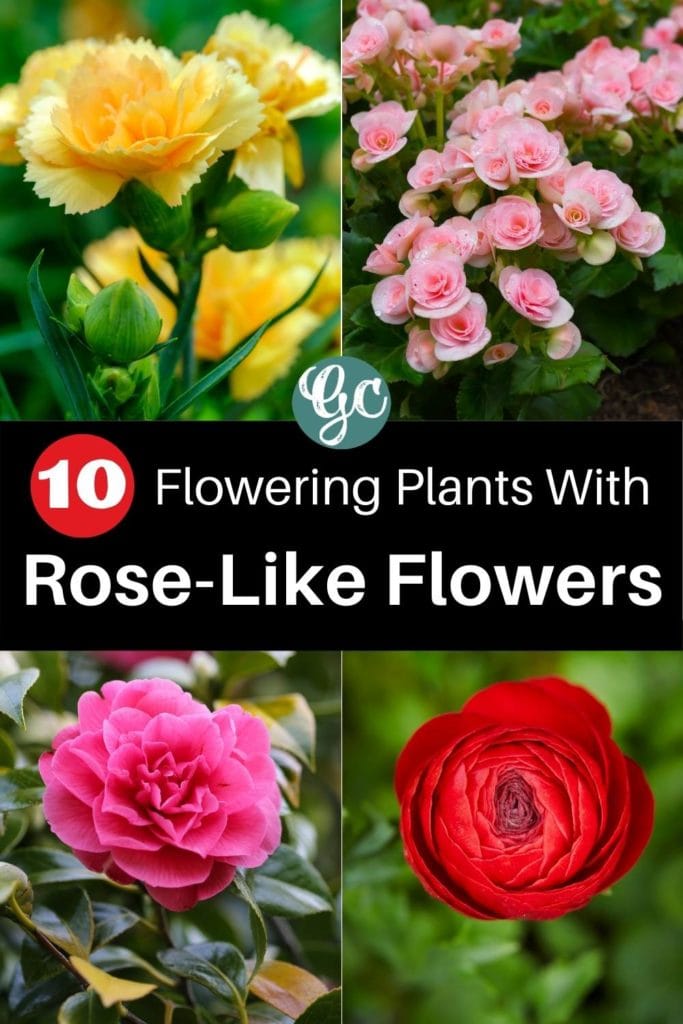
These 10 Flowers Mimic Roses So Well, You Won’t Believe Your Eyes!
Here are 10 rose-like flowers that look just as good (if not better) than the common roses in your garden.
1: Lisianthus (Eustoma Grandiflorum)
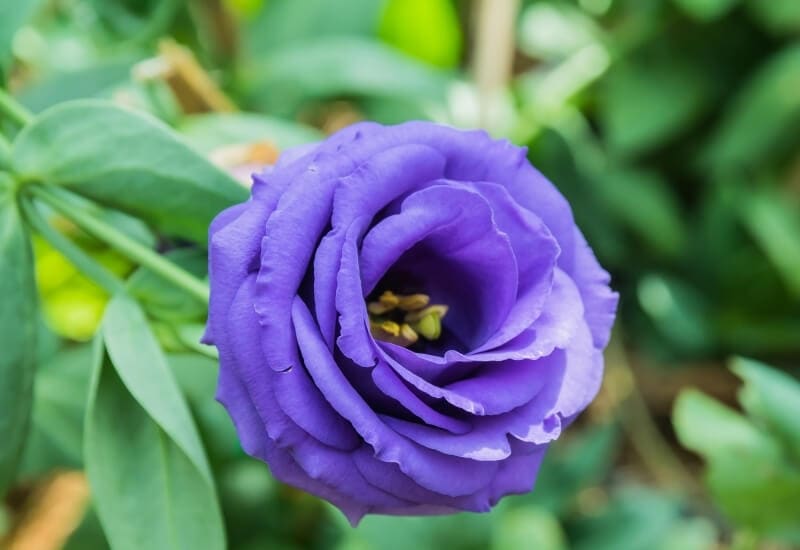
Look at a lisianthus and you will think it is a rose! The cup shaped double flowers of this plant in fact must be some of the closest “initiation” of the mist famous of flowers.
They are not as full of petals as some roses are, in fact you can see the the stamens and the carpel (the inner part of the flower). Apart from this, the petals have the same look as those of roses, and they even match them in elegance.
They come in different colors – actually the range is impressive, from white to purple. Dichromatic petals are very common too, especially white petals with brightly colored tips (purple, blue or pink).
The purple and violet range is possibly its strongest, but there are varieties with pastel and watercolor tints, like lemon and rose shades.
Lisianthus is a tender perennial which you can grow as an annual in colder climates. However, the plants are not as big as rose shrubs, so it is much more suitable to flower beds, borders and even containers if you wish.
2: Camellia (Camellia Spp.)
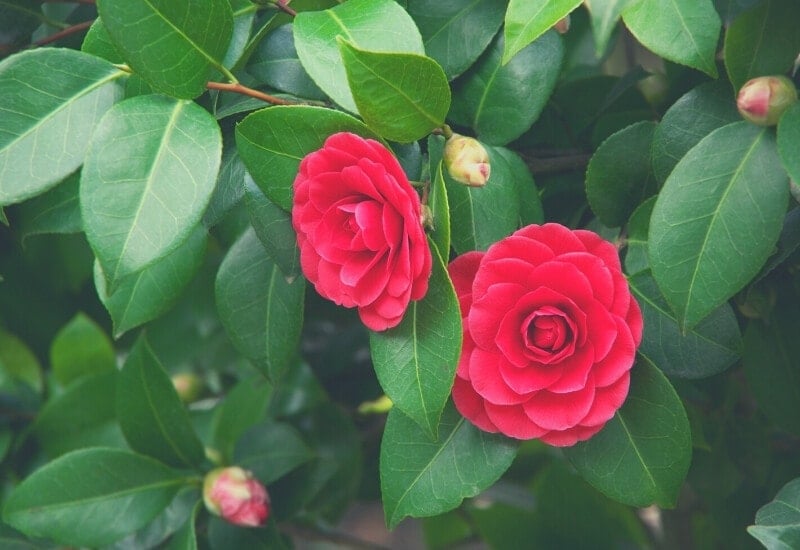
Camellia is one of the most famous, popular and beautiful flowers that look almost like roses. And like roses, but unlike lisianthus, it forms beautiful bushes that can grow to a considerable size.
They have stunning, waxy and very decorative deep green foliage too. But of course it is the flowers of camellias that we all love.
They come in the range from white to pink and red; some are strikingly romantic and some add an oriental touch to them. There are so many varieties, some have smaller flowers, from 1.5 inches (4 cm) to 7 inches (18 cm) across.
They will grow well in acidic soil, and if you have a sick plant, the chances are that the soil need a few cups of tea, or some organic acidic fertilizer.
Symptoms that they need acidity are yellow leaves and blooms that dry up before opening. On the other hand, unlike roses, you can grow camellias in poorly lit places, even under trees!
3: Ranunculus (Ranunculus Spp.)
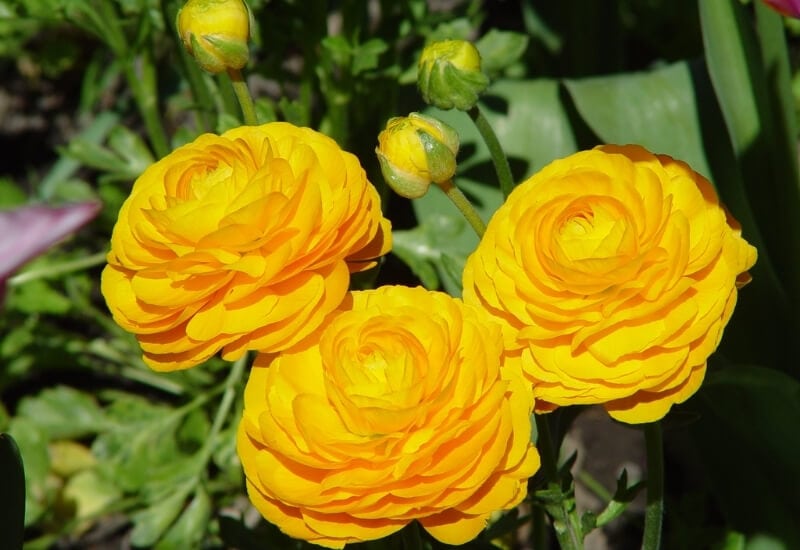
Of all the rose looking flowers, ranunculus has the “old world” pompon shaped rose look. The petals of ranunculus are also plenty and thick, giving you that “old world” look you get from rose varieties like ‘Pomponella’ or ‘Pompon Flower Circus’.
These are shapes that look perfect in traditional looking and informal gardens. Cottage gardens, naturalistic settings and romantic flower beds and hedges are perfect for ranunculus.
They are fairly short plants, though, so you cannot use them to recreate the shrub presence of roses. On other hand, they offer a wide range of colors to choose from.
There are varieties of all colors, white, yellow, orange, pink, purple and even blue. Usually these are very vibrant colors, but some varieties have more delicate ones, like peach and apricot, perfect for romance.
4: Gardenia (Gardenia Spp.)
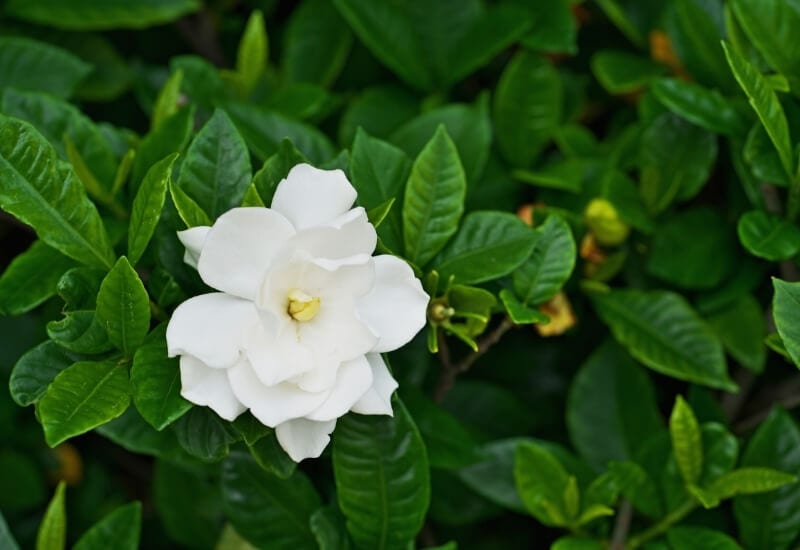
Another queen of gardens that looks like a rose, so much so that it is named after the word “garden” itself is beautiful gardenia.
The stunningly elegant and beautiful flowers of gardenia are some of the most recognizable around the world. Usually white, delicately arranged and soft looking, they have become synonymous with the word “flower” itself.
The double flowers look like roses, while the single ones are closer to jasmine, of course. The leaves are dark green, elliptical and very valuable to bring depth and a bold but natural texture to gardens. They form small shrubs, which can partly replace those of short roses.
Like camellias, they adapt to part shade positions and they do appreciate acidic soil too This makes them a perfect substitute to roses in conditions that make growing them impossible.
5: Double Impatiens (Impatiens Spp.)
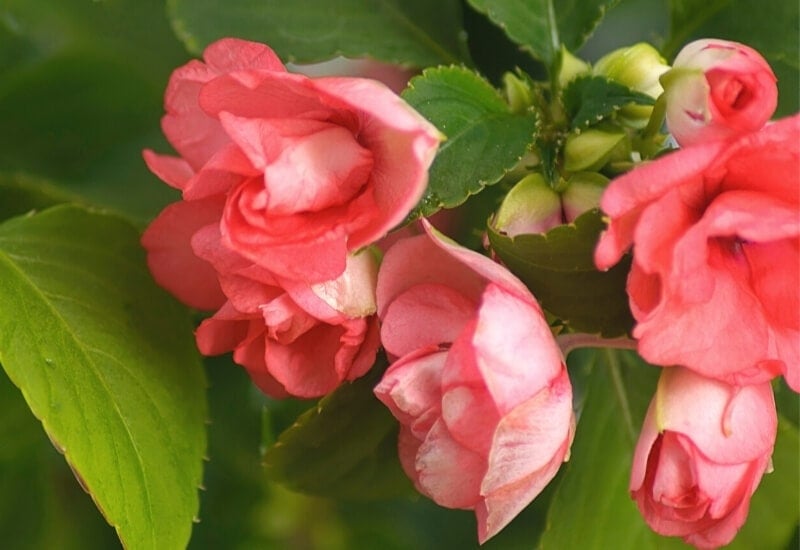
Maybe you had not imagined that impatiens can look like a rose? In fact, single ones don’t. But have a look at double ones and you will immediately find a striking resemblance with the Queen of Flowers.
What is more, they have a range of colors that comprises many of the delicate shades of white, off white, rose and pink. But they also have varieties with deep red, strong pink and vibrant orange.
As you know, impatiens are very generous bloomer that will fill with a sea of flower heads that almost cover the rich, lush, green and beautiful foliage of these fairly short plants.
They are ideal for flower beds, borders but also containers, and they are one of the few flowering plants that can give wonderful blooms in full shade.
6: Peonies (Paeonia Spp.)
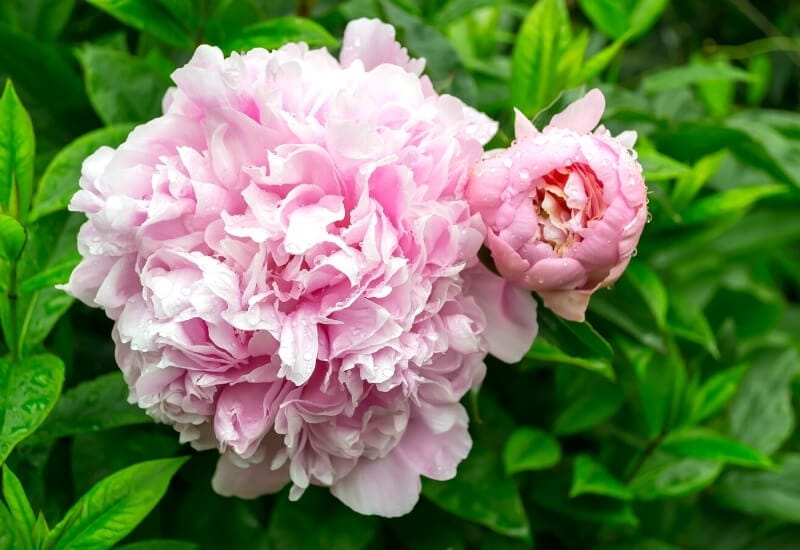
We meet another classic rose looking flower: peony. This is a small herbaceous shrub forming perennial with very decorative foliage that can change color, green to purple, a bit like that of roses.
In fact, of all the plants in this list, peony us the one whose leaves look more close to those of rose shrubs.
But of course it is the flowers that we most notice. And peonies offer wonderful cup shaped double flowers in strong and vibrant color, like flaming red, orange and yellow, but also in less “decided” shades, including all the pink to rose hues. They are ideal for containers. borders and beds in informal gardens of all types.
Related: 12 Types Of Peonies To Add A Pop Of Color To Your Spring Garden
7: Carnation (Dianthus Spp.)
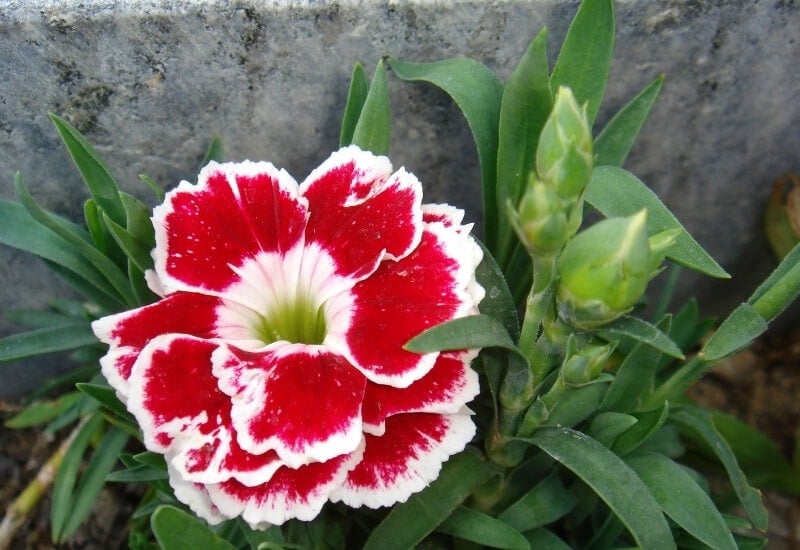
Carnations are famous for their intoxicating scent, but look closely and you will note that double ones look like roses. There are so many different varieties of this plant that your choice is huge.
Usually the most common palette is white to dark red via pink. In between the choice of single colors and double ones is huge.
They are very strong, generous and undemanding plants that will survive even with minimal maintenance. Some are very small, but even the big ones never form actual shrubs, so, in that they cannot replace roses.
But the carnation flowers in beds, borders, pots and on the sides of paths and stairs is so hard to resist for any gardener…
8: Begonia (Begonia Spp.)
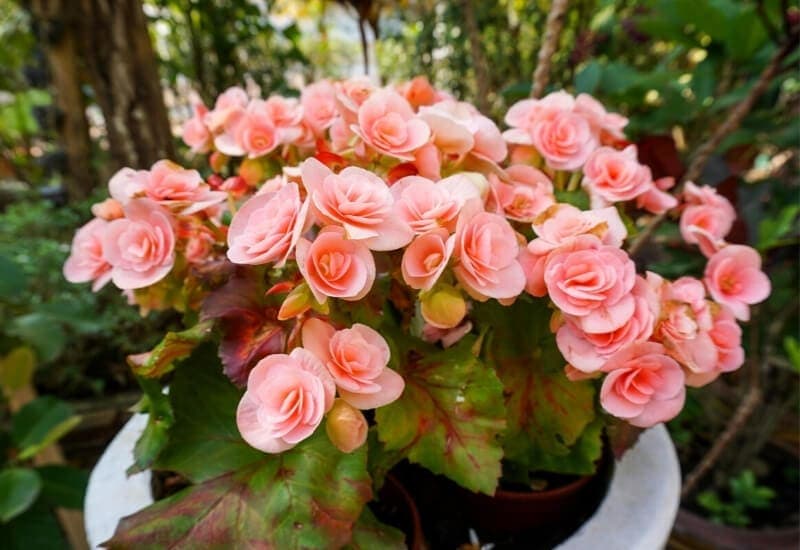
This list of flowers that look like roses gets even more beautiful with begonia. We all love this wonderfully generous flowering beauty, which we often see in hanging baskets and in window boxes. They are fast growers and undemanding, but they will bloom incessantly for moths on end.
The double ones look like roses and as you know, you can fond many different varieties in all the warm range of colors and in white.
Many are trailing, which makes them ideal for pots and hanging baskets, and many have striking foliage too, sometimes of the most impressive color like purple, almost black or even blue and white!
9: Double Anemone (Anemone Coronaria)
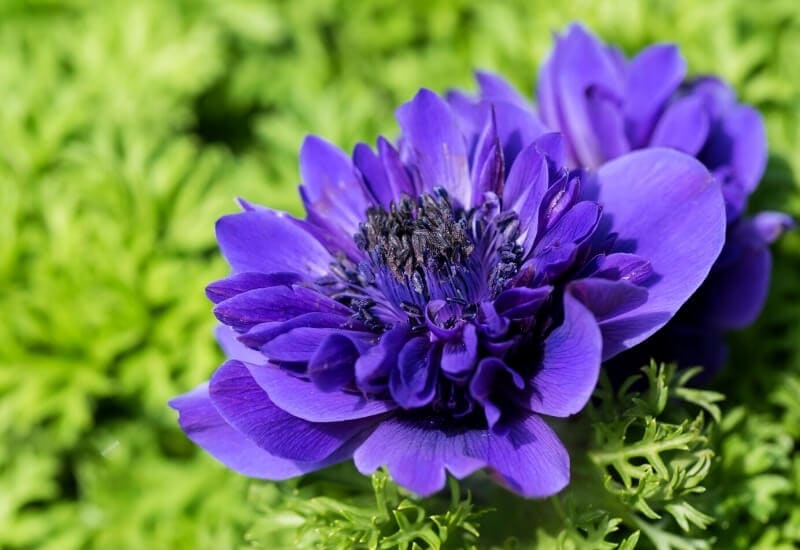
Anemones have some similarities with roses, though they keep their own personality. Double anemones have the special quality of looking like semi-double roses, and in a way they also keep the dog rose kind of look.
But then, the center is of that dark purple blue color that sets them apart. So, they look a bit like an “artist’s impression of an unusual rose that still holds its natural look though”.
They are small, as you know, so they cannot replace rose shrubs. On the other hand, they are very easy to grow and they are very generous with their blooms.
You can find them in all the white to violet range, via red and purple, but you can also find them blue And blue roses do not exist. They are ideal for flower beds and borders in all informal settings, and in cottage gardens they are just a must!
10: Dahlia (Dahlia Spp.)
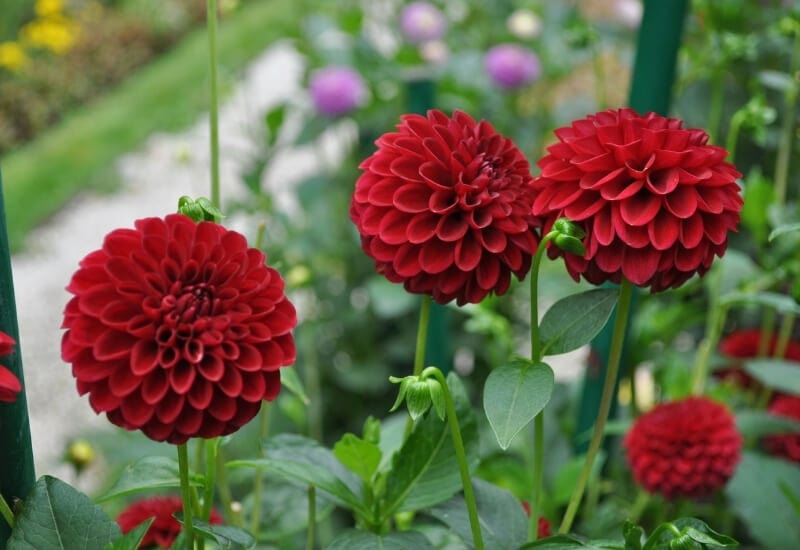
I would like to close this top 10 of flowers that look like roses with a striking one indeed: dahlia.
There are so many varieties of dahlias, from dwarf ones to giant ones with flower heads that reach one foot (30 cm) in diameter! And this makes them arguably the most “showy” of all the flowers in this list.
Not all dahlias look like roses; some have such regular arrangements of petals that they look more like origami or water lilies. But many doubles do.
They are excellent for borders in particular, where they can bring the rose flower shape well into the late season.
And the colors are striking! Dahlias are mainly known for their rich, passionate and warm palette, with wonderful shades or red, orange and purple.
Not Just Roses
What a lovely stroll in a rose garden have we just had? Oh, no, it wasn’t… Well, if the soil is not right, if the light is not right, if you live by the sea etc.
you may not grow roses, but for sure you can choose one of these wonderful rose looking flowers, and I am sure you will fall in love with the pm just the same!

Written By
Adriano Bulla
After many years as an academic in London, Adriano Bulla became a writer, publishing books like A History of Gardening, Organic Gardening and Elements of Garden Design; he then decided to become a gardener, following his childhood dream, and has been following his dream writing and gardening professionally in Southern Europe, where he has specialized in new and innovative organic gardening fields and techniques, like permaculture, regenerative agriculture, food forests and hydroponics.

I believe my 3 knockout rose bushes have Rose Rosetta and I will be digging them up. I need something to take their place. My flower bed is approximately 32 feet long by 16 feet wide.
I am in Mountain View AR.
Do you have any suggestions.
Ranunculus might be a good choice for humid subtropical climate of Arkansas.
I don’t think I want a flower like a begonia that blooms with moths.